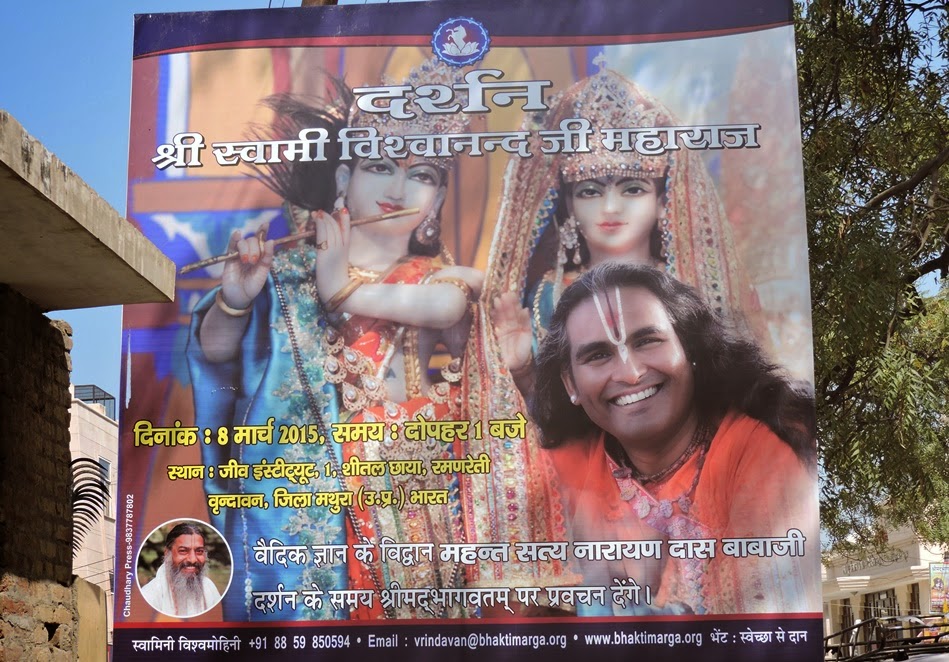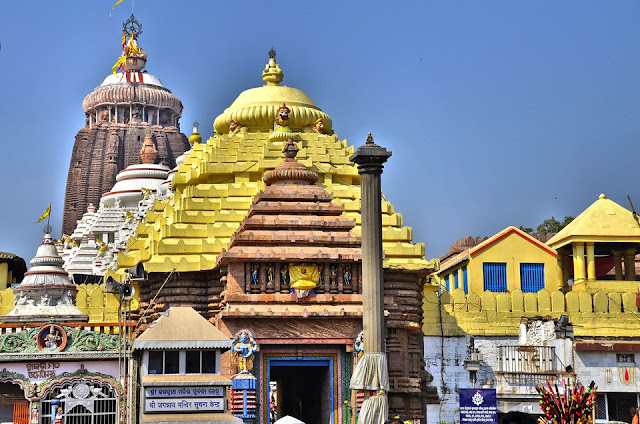Gopala-vijaya III: Purva-raga
We got as far as the beginning of chapter 30. The previous chapter contained the gopis' reactions to Krishna's beauty. Note the difference to SKK where Krishna is described as lust-mad and Radha's pūrva-rāga is totally ignored. Since GPVJ follows the Radha-is-older-than-Krishna (O God I am going to use this word!) meme, it is hard to talk about a classical pūrva-rāga format. Nevertheless, Rupa Goswami presents what is the classical position in Ujjvala-nīlamaṇi:
api mādhava-rāgasya prāthamye sambhavaty api |
ādau rāge mṛgākṣīṇāṁ prokte syāt cārutādhikā ||
ādau rāgaḥ striyā vācyaḥ paścāt puṁsas tad-ingitaiḥ
ādau nārī bhaved raktā pumān paścāt tad-iṅgitaiḥ |
anyathāpi na doṣaḥ syād yadi prema samaṁ dvayoḥ ||
It is interesting that archetypal love as described in the Sanskrit tradition includes the various kinds of separation (i.e., "defects"), and the Vaishnava tradition debates whether or not these defects can be accommodated in the supreme archetype of love. (Rupa Goswami goes so far as to insult those who think they cannot by calling them a-pūrva-rasikas). But on this point, i.e., pūrva-rāga Rupa is unequivocal: Radha or any gopi's and Krishna's love is eternal. It may externally arise through different impetuses, but these are just for the sake of interest (i.e. rasa) in the prakata-lila.
abhiyogād viṣayataḥ sambandhād abhimānataḥ |
sā tadīya-visheṣebhya upamātaḥ svabhāvataḥ |
ratir āvirbhaved eṣām uttamatvaṁ yathottaram ||
proktā atrābhiyogādyā vilāsādhikya-hetave |
ratiḥ svabhāvajaiva syāt prāyo gokula-subhruvām ||
ādau rāge mṛgākṣīṇāṁ prokte syāt cārutādhikā ||
Although it is possible that Krishna’s love can come first, there is more charm in describing the love of the doe-eyed gopis first. (UN 15.16)
First one should describe the love the woman has for the man, and the man’s love should follow on cue. (SD 3.195)A full verse, which is similar to this one, is also quoted in Vishnudas's commentary to UN 15.16:
anyathāpi na doṣaḥ syād yadi prema samaṁ dvayoḥ ||
The woman [in the dramatic work] should fall in love first, and the man afterwards, on cue. But there is no fault if it happens otherwise, as long as the two are equal in their love.However we may look at it, what makes SKK a little different is the unevenness of the love: Krishna's love is more like classical lust: He is burning with desire for Radha and she is reluctant to respond. When she does, her love seems to become stronger than his and he even betrays her in the end by placing duty over love.
It is interesting that archetypal love as described in the Sanskrit tradition includes the various kinds of separation (i.e., "defects"), and the Vaishnava tradition debates whether or not these defects can be accommodated in the supreme archetype of love. (Rupa Goswami goes so far as to insult those who think they cannot by calling them a-pūrva-rasikas). But on this point, i.e., pūrva-rāga Rupa is unequivocal: Radha or any gopi's and Krishna's love is eternal. It may externally arise through different impetuses, but these are just for the sake of interest (i.e. rasa) in the prakata-lila.
Rati for both the gopis and Krishna develops (1) when one or the other lover reveals in his love (abhiyoga), from seeing, hearing, touching, etc., the object of love (viṣayataḥ), by some relationship, i.e., by some resemblance in qualities (sambandha), through a determined insistence (abhimāna), through things connected to him, such as his footprints, associates, dhama, etc. (tadīya-viśeṣa), by analogy (upamAna), and spontaneously (svabhāva). These are progressively superior. (UN 14.42)[By the way, though these are a little difficult to understand in this context, they might all be said to be causes for the sādhaka in rāgānugā bhakti also and should be thus cultivated in the sādhaka's imaginary life.]
The different cause of love have been described here for the sake of expanding the diversions, but the beautiful-browed women of Gokula all have, practically speaking, spontaneous love for Krishna. (UN 14.42)Anyway, in GPVJ, there has been a move towards the classical formulation (as indeed is there in the Bhāgavatam , with the difference that in the Bhāgavatam, Krishna's love for the gopis is never described in passionate terms. The gopis are passionate for Krishna, OK, but he is never totally human in his passion for them. He is responding to their love, not caught up in it. In other words, we are moving to a compromise position between the human and the aiśvarya-maya Divine.




Comments